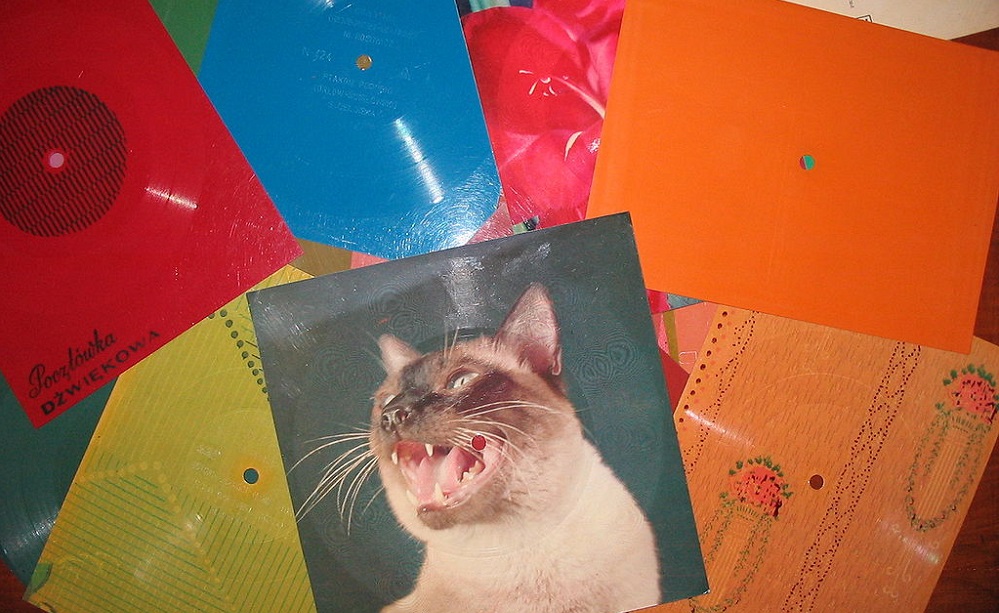“Audio Digest”: 20 materials on the history of acoustic systems and music in Soviet culture
Today we have collected twenty materials for you from our “ Hi-Fi World ” and Habré blog. They are dedicated to the history of Soviet technology and music in the Soviet and post-Soviet culture.
Under the cut read - about rock festivals, musical instruments and car stereos of the USSR.

Photo by Sergey Norin / CC

Piotrm00 / PD Photo
A few more of our collections from the category "Reading at the weekend":
Under the cut read - about rock festivals, musical instruments and car stereos of the USSR.

Photo by Sergey Norin / CC
Memories and experiences of contemporaries
- Sergey Davidovich Bat. Memories. A talented engineer, author of the book “Amateur Loudspeakers” and many articles on DIY radio engineering, recalls his acquaintance with technologies, situations in which the leaders of large enterprises communicated on a par with ordinary radio amateurs, and also shared memories of his childhood and the development of practical skills of an engineer: from creating the first coils in the school to design their own speakers.
- Alexander Kutikov: “People come to the Abbey Road studio for the air.” Bass guitarist and vocalist of The Time Machine group Alexander Kutikov spoke about his approach to sound recording in the style of “old school”, the technical features of the recording of the music of Time Machine, and also about recording at the legendary Abbey Road studio.
- Sound podcast: old new sound. The guest of the 26th edition of the Sound podcast was Yuri Fomin , a sound engineer and acoustic system engineer who worked with numerous Soviet groups and artists. We talked with Yuri about how music was recorded in the Soviet era and how music creation has now become available to anyone who has a computer, as well as why modern music often sounds the same.
History of Soviet technology
- Receivers from the USSR: a brief history of audio systems in Soviet cars. From this article you will learn how audio systems developed in Soviet cars: from the first radio receivers to more advanced acoustic equipment. This story includes experiments such as turntables, "elite" receivers for high-profile cars, and a radio that could work in car and portable mode.
- “How the screen became speaking”: the story of the shorinofon. Before the era of world-wide tape recorders, inventors experimented with alternative ways of recording sound. One of such scientists was Alexander Fedorovich Shorin, who created a device called “Shorinofon”, which was popular in the USSR in the 1930s and 1940s. In this article we tell about the history of the apparatus and its use in Soviet cinema to record the sounds of the city in the field.
- Sound recording history: from mechanics to digital. What was the innovation of the Shorinofon and why the device did not become popular outside the USSR? This material will help answer this question, in which we will follow the development of recording formats from the first phonographs from the 19th century to the digital revolution and iTunes.
- Unusual musical instruments that did not become mainstream. One of the most unusual musical instruments was invented by the Soviet physicist Lev Termen during a scientific experiment far from music in 1918. In this article, we tell the story of the creation and popularization of the Thereminx, in which there was even room for a concert in the Kremlin in front of Lenin, and we recall other musical instruments that turned out to be too unusual for the general public.
- Wide cinema format in the USSR: SOVSCOPE 70 mm. Back in 1957, the USSR began to develop widescreen film systems under the common name SOVSCOPE. We are telling how the technology, on which they made big bets in Soviet times, turned out to be unnecessary in modern times.
Radio Engineering Plant: Past and Present
- Soviet legend: the history of the plant "Radiotekhnika". How did Radio Engineering become one of the main Soviet radio equipment manufacturing plants? The history of the Riga company, which is not a problem period, but continued in its employees and a completely new production process.
- Report from the plant "Audiomania" in Riga. New life of the plant "Radiotekhnika", which became the basis for the production, created by the hands of experienced engineers of the enterprise. We show the full cycle of creating Hi-Fi columns: from wood processing to final assembly.
- As in Arslab, they seek and find the balance of price and quality of columns. The history of the Arslab brand, which combined foreign innovations and many years of experience of Radio Engineering veterans, as well as an overview of some models of the brand’s speaker systems, which combine decent quality equipment with a price not exceeding two thousand dollars.
- Yuri Fomin: “Acoustic system is a complex but accurate mathematical model.” Interviews with professional audio engineer Yuri Stanislavovich Fomin about his work on the Arslab brand, the philosophy of creating acoustic systems and important production details that are not always noticeable to the average person.
- Acoustics Old School: familiarity with the history of the brand. The former production of "Radio Engineering" has become home not only for Arslab, but also for other brands of speaker systems. One of them is the nostalgic brand of premium equipment Old School, to which one of the episodes of our podcast was dedicated. In addition to the history of the brand, we discussed how the fashion for speaker design is changing.
USSR heritage in modern times
- Myths and facts about vintage loudspeakers. Yury Fomin argues whether vintage radio engineering can “live” as much time as musical instruments, and gives advice on restoring vintage loudspeakers.
- The soundtracks in Dolby Atmos format will be recorded on Mosfilm. The development of the largest cinema concern in Russia continues. One of the new stages in the history of the studio was the creation of a studio recording sound in Dolby Atmos format.
- Flexible plates - a universal carrier, which is back from the past. As an underground recording, “music on the bones” preceded the distribution of flexible records with monthly magazines and a strange competition from McDonald's: consider the history of an unusual format of vinyl and its prospects in the modern world.

Piotrm00 / PD Photo
Music and voice in Soviet and post-Soviet culture
- 5 legendary rock festivals that shook the USSR. “Soviet Woodstock” is difficult to compare in scale and cultural influence with the original festival, but behind the Iron Curtain were held their concerts, which featured the main rock bands of the time. The history of five major rock festivals, which were held contrary to the prohibitions and reactionaries.
- Fairy tales in the USSR: the story of "child" vinyl. Soviet records with children's fairy tales were significantly different from modern audio books, if only because well-known actors and composers took part in the recording, who were trying to make familiar plots something more. In this article, we remembered the history of the recording of "children's" records, which often turned not so much to the children, but to their older relatives.
- Russian radio plays: from the “Baby Monitors” to “Solaris”. Although radio plays are more likely to be associated with Western works, this genre has become popular in the USSR and Russia. From this article you will learn about well-known radio plays that were created in the Soviet and post-Soviet times based on both science fiction and classic novels.
- Why Rachmaninov played concert number 3 faster than others. Although after the revolution, Sergei Rakhmaninov left Russia, he was closely associated with his homeland and worried about the fate of the country. This article tells about the features of the composer playing the piano and how it relates to the history of sound recording.
- How dubbing actors work. The foundations of modern cinema dubbing were laid down by the Soviet dubbing tradition, in which the voices of the actors were completely copied, which made dubbing a complex creative task. From this article you will learn about the intricacies and difficulties encountered when dubbing films.
- Odnogolosy dubbing - the history and the main names of the era of VHS. Where did the "nasal" dubbing of films from the 80s and 90s come from and why was it so common in pirated recordings? We remember the first films of the era of VHS and translators, whose voices we learn even after many years.
A few more of our collections from the category "Reading at the weekend":
- 5 books about music and musicians
- 30 materials about the amazing properties of sound and audio technology
- 30 materials on sound, audio brand history and film industry
- Our blog on Yandex.Dzene
- Our telegram channel
